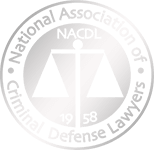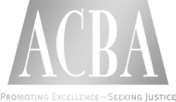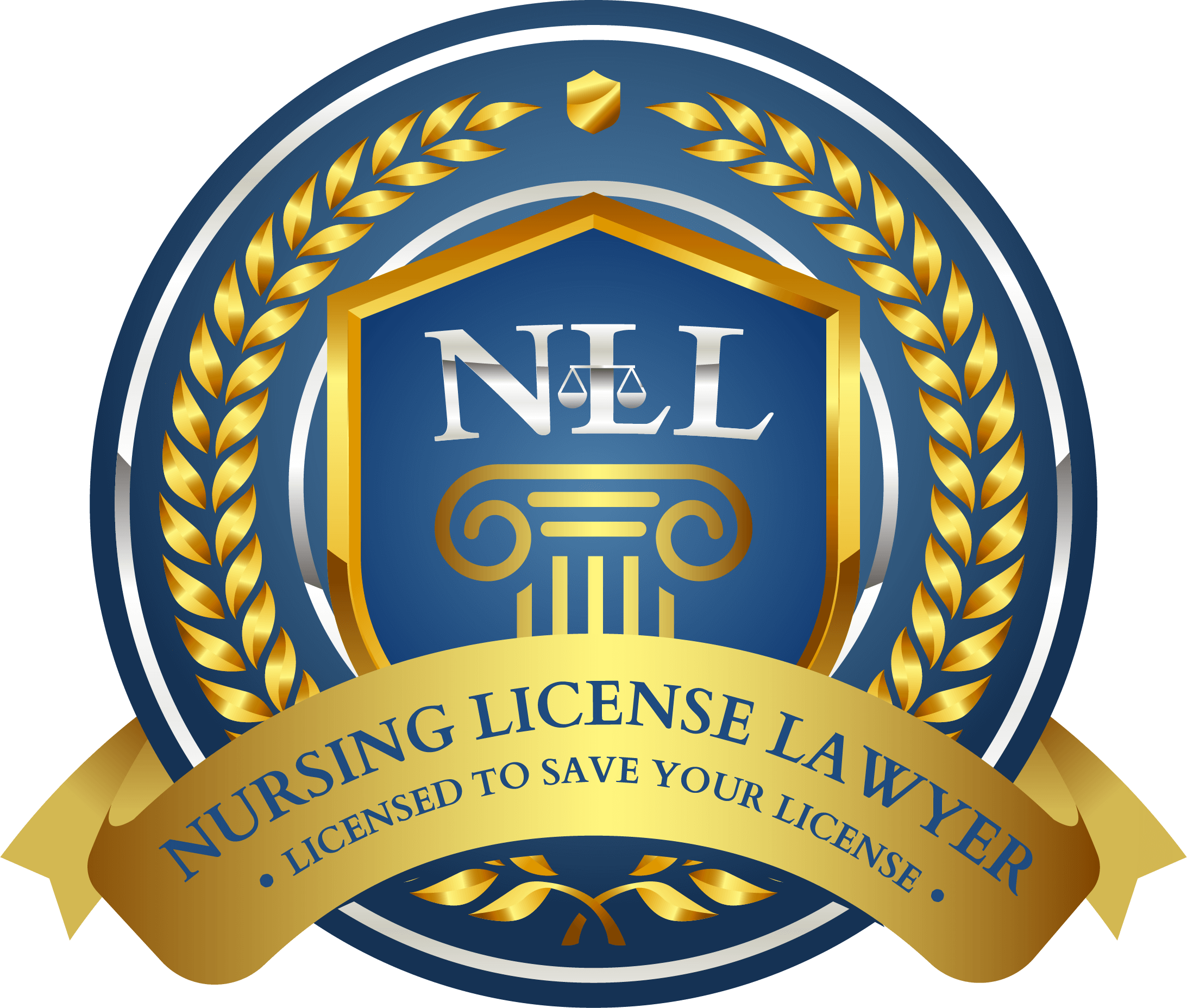When Patient Safety in Nursing is Compromised: Understanding Breaches and Legal Implications
In the intricate tapestry of healthcare, patient safety stands as an unwavering cornerstone, and the tireless guardians of this cornerstone are the nurses who dedicate their lives to the well-being of those they serve. Patient safety is not merely a noble aspiration; it is a fundamental human right and an ethical imperative. Nurses, as the frontline caregivers, bear the solemn responsibility of upholding this right and ensuring the protection of every patient under their care.
This article delves into the realm of patient safety in nursing, emphasizing the pivotal role played by nurses in its preservation. We shall embark on a journey to explore the instances when patient safety is compromised, the intricate legal complexities that surround such breaches, and the profound implications they bear. In particular, our focus is on California, a state known for its rigorous healthcare regulations and stringent legal standards.
Our aim is twofold: firstly, to illuminate the scenarios and challenges where patient safety is at risk, and secondly, to shed light on the legal implications that follow. We intend to arm legal professionals in California with a comprehensive understanding of patient safety breaches, enabling them to advocate for justice and accountability when the rights and well-being of patients are compromised.
As we traverse the landscape of patient safety and law, we invite you to join us in this exploration, to recognize the vital role nurses play in the protection of patients, and to appreciate the critical importance of legal professionals in upholding the sanctity of healthcare. Together, we embark on a journey to safeguard the cornerstone of healthcare – patient safety.

Patient Safety Breaches in Nursing
Patient safety breaches in nursing represent a grave concern within the healthcare landscape, posing significant risks to the health and well-being of patients. These breaches encompass instances where established standards of care and safety protocols are not adhered to, resulting in potential harm or danger to patients. To fully comprehend the gravity of these breaches, let’s define them and delve into common scenarios where patient safety may be compromised, along with the potential consequences.
Definition of Patient Safety Breaches:
Patient safety breaches in nursing encompass any deviation from the established norms and best safety practices designed to ensure the well-being and security of patients under nursing care. These breaches may occur due to errors, negligence, or lapses in adherence to healthcare protocols and guidelines.
Common Scenarios of Patient Safety Breaches:
- Medication Errors: Administration of incorrect medications, wrong dosages, or improper routes of administration can result in serious harm to patients. For instance, administering a medication to which a patient is allergic due to a documentation error.
- Inadequate Infection Control: Failure to follow stringent infection control protocols can lead to healthcare-associated infections. This may occur when healthcare workers do not wash their hands adequately or do not maintain proper sterile techniques during procedures.
- Patient Falls: Patients may be at risk of falls, particularly those with mobility issues or cognitive impairments. A breach in patient safety occurs when healthcare staff does not take adequate precautions to prevent falls, such as not using bed rails or providing proper assistance.
- Pressure Ulcers: Neglecting to turn and reposition bedridden patients can result in the development of painful and debilitating pressure ulcers, particularly in vulnerable populations like the elderly or immobile patients.
- Delayed Response to Alarms: Inadequate responses to alarms from vital sign monitoring equipment or call bells can lead to delayed interventions and compromised patient safety.
Potential Consequences of Patient Safety Breaches:
- Patient Harm: The most immediate consequence of patient safety breaches is harm or injury to the patient. This can range from minor discomfort to severe, life-threatening complications.
- Psychological Distress: Patients who experience safety breaches may suffer from psychological distress, including anxiety, fear, and a loss of trust in the healthcare system.
- Legal and Ethical Issues: Patient safety breaches can lead to legal and ethical dilemmas. Patients or their families may pursue legal action against healthcare providers or institutions, leading to costly lawsuits.
- Reputation Damage: Healthcare institutions and professionals may face reputational damage as a result of patient safety breaches. Trust in the healthcare provider may erode, affecting their ability to deliver care effectively.
- Regulatory Consequences: Healthcare facilities may face regulatory penalties, fines, or sanctions for patient safety breaches, further impacting their ability to provide care.

Legal Framework for Patient Safety in California
In the state of California, ensuring patient safety is not just a moral obligation but also a legal imperative. The legal framework governing patient safety is comprehensive, encompassing a multitude of healthcare laws, regulations, and ethical standards. Below, we provide an overview of the legal landscape specific to California and the legal obligations it places on healthcare professionals, with a particular focus on nurses.
California’s Healthcare Laws and Regulations:
- Health and Safety Code: California’s Health and Safety Code contains provisions related to patient safety, healthcare facility licensing, and regulations governing healthcare practitioners. It outlines the legal requirements for healthcare facilities, including hospitals and nursing homes, to maintain safe environments for patients.
- Nurse Practice Act: The California Nurse Practice Act governs the practice of nursing in the state. It defines the scope of practice for registered nurses (RNs) and licensed vocational nurses (LVNs) and outlines their legal obligations, including those related to patient safety.
- Medical Injury Compensation Reform Act (MICRA): MICRA is a significant California law that places caps on non-economic damages in medical malpractice cases. While this law does not directly address patient safety, it has implications for legal actions related to patient safety breaches.
- California Department of Public Health (CDPH): CDPH is the state agency responsible for healthcare facility licensing and oversight. It enforces regulations aimed at ensuring patient safety and quality care in healthcare facilities.
- Board of Registered Nursing (BRN): The BRN is the regulatory body that licenses and oversees registered nurses in California. It sets standards for nursing practice and enforces disciplinary actions against nurses who breach legal and ethical obligations related to patient safety.
Legal Obligations of Healthcare Professionals, Particularly Nurses:
- Standard of Care: Healthcare professionals in California, including nurses, are legally obligated to provide care that meets the standard of care expected in their field. Deviations from this standard can lead to legal liability in cases of patient harm resulting from safety breaches.
- Informed Consent: Nurses have a legal duty to ensure that patients provide informed consent before any medical procedure or treatment. This includes explaining the risks, benefits, and alternatives to patients, ensuring their understanding, and documenting the consent process.
- Patient Confidentiality: Protecting patient confidentiality is a paramount legal obligation. Nurses must adhere to the Health Insurance Portability and Accountability Act (HIPAA) and state privacy laws to safeguard patient information.
- Safe Practices: Nurses are expected to follow safety practices, including infection control, medication administration, and patient mobility protocols, to prevent harm to patients. Failure to do so can result in legal consequences.
- Documentation: Accurate and thorough documentation of patient care is a legal requirement. Proper documentation can serve as evidence of adherence to legal standards and can be crucial in legal and regulatory investigations.
- Mandatory Reporting: In cases where patient safety is compromised due to the actions or inactions of healthcare professionals, nurses have a legal duty to report such incidents to appropriate authorities and supervisors. This includes reporting errors, safety breaches, or unethical conduct.

Medical Malpractice in California
Medical malpractice is a critical aspect of healthcare law that plays a pivotal role in addressing patient safety breaches, including those involving nursing care. In the state of California, as in the broader legal landscape, medical malpractice claims are closely tied to breaches in patient safety. This section explores the concept of medical malpractice and how it relates to patient safety breaches in nursing, outlining the key elements of a medical malpractice claim in California.
Medical Malpractice and Patient Safety Breaches:
Medical malpractice refers to the professional negligence or misconduct of healthcare providers that results in harm or injury to a patient. Patient safety breaches, such as medication errors, infections, falls, or inadequate care, often form the basis of medical malpractice claims, as these breaches may result from deviations from the standard of care and have the potential to cause significant harm to patients.
Key Elements of a Medical Malpractice Claim in California:
- Duty: The healthcare provider, including nurses, owes a duty of care to the patient. In California, this duty is defined by the standard of care expected of a reasonably prudent healthcare professional in the same specialty under similar circumstances.
- Breach of Standard of Care: To establish medical malpractice, it must be demonstrated that the healthcare provider breached the standard of care. This breach can result from actions taken or omitted during patient care, constituting a deviation from the accepted professional standards.
- Causation: A causal link must exist between the breach of the standard of care and the harm suffered by the patient. In other words, it must be proven that the provider’s actions or omissions directly led to the patient’s injuries.
- Damages: Medical malpractice claims require the presence of compensable damages. These damages may include physical injuries, emotional distress, medical expenses, loss of income, and other related losses.
Reporting Patient Safety Concerns:
The importance of reporting patient safety concerns within healthcare institutions cannot be overstated. Reporting is a critical mechanism for identifying and addressing breaches in patient safety, thereby preventing harm to patients. Nurses, as frontline caregivers, play a pivotal role in this process by reporting incidents, errors, and safety concerns to their supervisors and appropriate authorities.
Legal Protections for Whistleblowers in California:
California recognizes the significance of healthcare professionals reporting patient safety concerns, and it has legal protections in place to safeguard whistleblowers. Whistleblower protection laws in California provide safeguards against retaliation, ensuring that nurses who report safety breaches are shielded from adverse actions by their employers. These protections are found in various state and federal laws, including the California Whistleblower Protection Act and the federal False Claims Act.
Under these laws, nurses who report patient safety breaches in good faith are shielded from retaliation, such as termination, demotion, or harassment. Moreover, whistleblowers may be entitled to legal remedies if retaliation occurs, including reinstatement, back pay, and compensation for emotional distress.

Legal Implications and Consequences
When patient safety is compromised, healthcare professionals, including nurses, may find themselves facing significant legal implications and consequences. These consequences can extend to various aspects of their professional lives and can have far-reaching effects. Let’s delve into the potential legal ramifications and explore real-world case examples, including California-specific cases, to illustrate legal outcomes.
Potential Legal Implications:
- Medical Malpractice Lawsuits: Patient safety breaches can lead to medical malpractice claims, where healthcare professionals, including nurses, may be named as defendants. These lawsuits can result in substantial financial settlements or judgments if negligence is established.
- Disciplinary Actions: Regulatory bodies, such as the California Board of Registered Nursing (BRN), have the authority to investigate and impose disciplinary actions against nurses who are found to have compromised patient safety. Consequences may include suspension, license revocation, or probation.
- Criminal Charges: In extreme cases involving gross negligence or intentional harm, healthcare professionals may face criminal charges, such as manslaughter or assault. Convictions can lead to imprisonment and loss of licensure.
- Civil Lawsuits: Apart from medical malpractice claims, nurses may also be subject to civil lawsuits for personal injury or wrongful death. These lawsuits seek compensation for the harm suffered by patients or their families.
California’s Role in Patient Safety
California is known for its commitment to patient safety and has several unique initiatives and regulations aimed at enhancing safety within the state’s healthcare system. Some notable aspects include:
- CalHospital Compare: California’s version of the Hospital Compare initiative provides detailed information about the quality of care and patient safety in hospitals across the state. This empowers patients to make informed decisions about their healthcare providers.
- Statewide Quality Reporting Program: California mandates the reporting of healthcare quality data by hospitals and healthcare facilities. This information is publicly available and contributes to accountability and transparency in patient safety.
- California Patient Safety Advocates: Various organizations and advocacy groups in California focus on patient safety, such as the California Hospital Association (CHA). Legal professionals can collaborate with these entities to advocate for patient safety reforms, participate in educational initiatives, and promote safer healthcare safety practices.

Legal Remedies and Patient Advocacy
When patients have experienced compromised safety due to nursing breaches, they have legal remedies available to seek redress for their injuries. Legal professionals play a crucial role in advocating for patients’ rights and seeking justice on their behalf. In this section, we will explore these legal remedies and the role of patient advocacy in ensuring accountability.
Legal Remedies Available to Patients:
- Medical Malpractice Claims: Patients who have suffered harm due to nursing breaches may file medical malpractice claims against the responsible healthcare providers or institutions. If negligence is proven, patients can seek compensation for their medical expenses, pain and suffering, lost income, and other damages.
- Personal Injury Lawsuits: In cases where nursing breaches have resulted in physical injuries, patients may file personal injury lawsuits to seek compensation for their injuries, including medical expenses, rehabilitation costs, and pain and suffering.
- Wrongful Death Claims: When nursing breaches lead to a patient’s death, surviving family members may file wrongful death claims to seek compensation for their loss, funeral expenses, and the emotional and financial impact of the death.
- Regulatory Complaints: Patients and their families can file complaints with regulatory bodies, such as the California Board of Registered Nursing (BRN), to report nursing breaches. These complaints can trigger investigations and disciplinary actions against the responsible nurses.
The Role of Legal Professionals in Patient Advocacy:
Legal professionals play a crucial role in advocating for patients’ rights and seeking justice on their behalf. This advocacy includes:
- Legal Representation: Legal professionals represent patients in medical malpractice, personal injury, or wrongful death cases, ensuring that their rights are protected and that they receive fair compensation for their injuries.
- Investigation: Legal professionals conduct thorough investigations into nursing breaches, gathering evidence to support the patient’s case. This may involve reviewing medical records, interviewing witnesses, and consulting with experts.
- Negotiation and Litigation: Legal professionals negotiate with healthcare providers and institutions to reach fair settlements for patients. If a settlement cannot be reached, they may pursue litigation to secure a favorable outcome in court.
- Patient Education: Legal professionals educate patients and their families about their rights, the legal process, and what to expect during their pursuit of justice. They ensure that patients are empowered to make informed decisions.

Prevention and Risk Management
Preventing patient safety breaches is a paramount goal for healthcare institutions and professionals. Proactive measures can help mitigate risks and enhance patient safety. Here are some insights into prevention and risk management strategies:
- Compliance with Regulations: Healthcare institutions must adhere to California’s patient safety regulations and healthcare laws. Ensuring strict compliance reduces the likelihood of breaches.
- Continuous Training: Ongoing training and education for healthcare professionals, including nurses, are essential. This includes training in infection control, medication safety, fall prevention, and other safety protocols.
- Quality Improvement Programs: Healthcare institutions should implement quality improvement programs that include regular audits, reviews of safety incidents, and the development of action plans to address vulnerabilities.
- Reporting and Accountability: Encouraging a culture of reporting incidents and near-misses promotes transparency and accountability. Healthcare professionals should feel comfortable reporting safety concerns without fear of reprisal.
- Patient and Family Engagement: Engaging patients and their families in their care and safety processes empowers them to be active participants in their own healthcare and provides an additional layer of safety.

Conclusion
In the complex world of healthcare, patient safety stands as an unwavering pillar, and nurses are its stalwart guardians. When patient safety is compromised, it not only shatters the trust patients place in healthcare but also has profound legal implications for all involved.
This journey through the intricacies of patient safety breaches, their legal consequences, and the role of legal professionals in advocating for justice highlights the paramount importance of upholding the sanctity of healthcare. Patients who have suffered harm due to nursing breaches have legal avenues to seek redress, and legal professionals are the champions of their rights.
Yet, our ultimate aim is not just to understand breaches and legal implications but to prevent them altogether. The proactive strategies for risk management and patient safety promoted here are the true testament to our commitment to delivering care that is not only competent but also compassionate.
In concluding this exploration, we acknowledge that the pursuit of patient safety is not just a legal or ethical obligation; it is a moral imperative. The harmony between healthcare and the law serves as a beacon, guiding us toward a future where patient safety is upheld, breaches are minimized, and every patient’s journey through healthcare is marked by trust, compassion, and justice.










